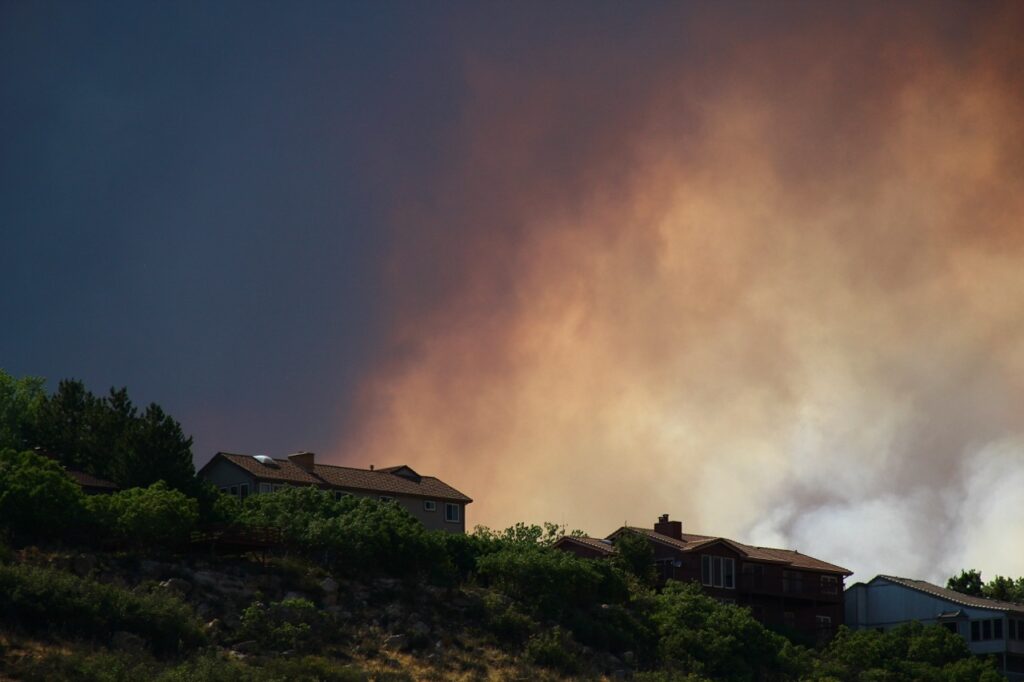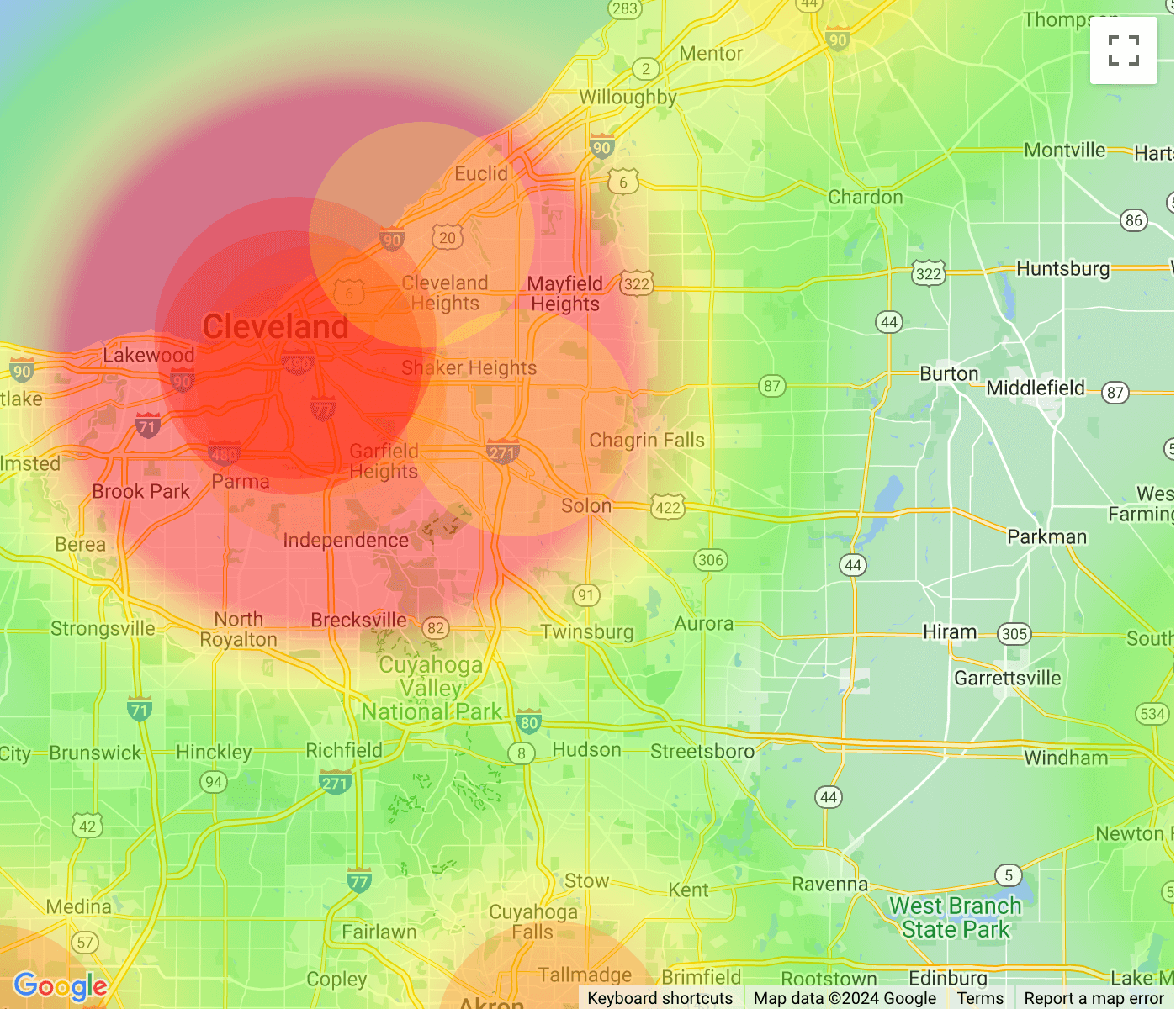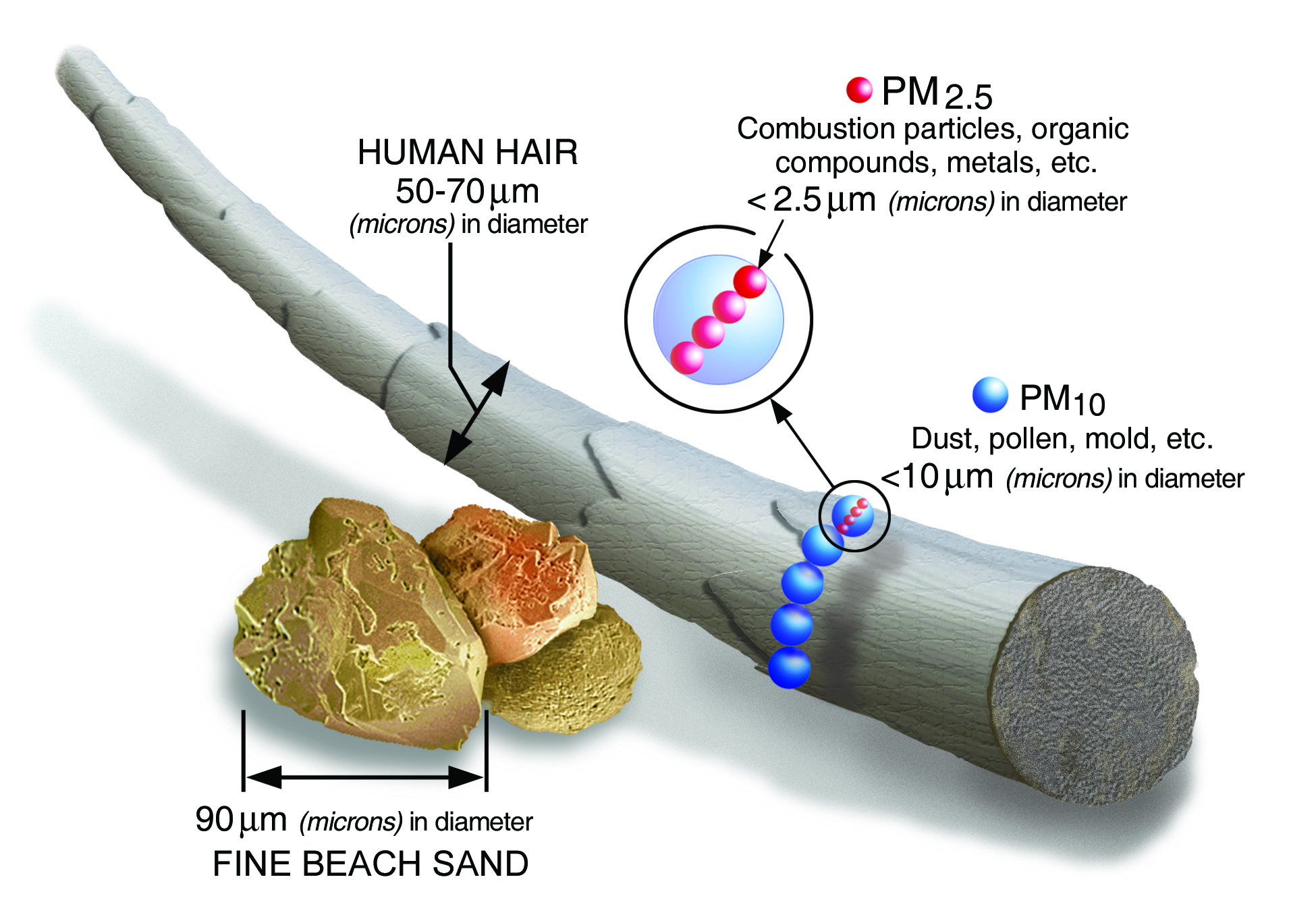Air quality has been a rising concern in recent years as more and more studies link poor air quality with increased risk of health problems such as asthma attacks, stroke, heart disease, pneumonia, and even lung cancer. As concerns for air quality continue to grow, so does our need to understand the facts so we we can create a safe environment for ourselves and our loved ones.
Table of Contents
All of us in the Greater Cleveland Area were affected by last year’s air quality issues caused by the Canadian wildfires in one way or another. Last year there were days where I would go outside in the afternoon and the sun was so covered by haze that it looked like a faintly glowing red ember in the sky. Those were the days where we had to stay inside or risk health exposing ourselves to harmful particles in the air.
For many of us, this was a wake up call. If wildfires can cause airborne particulate matter to affect our health, what does that mean for all the power plants, vehicle emissions, mold, and aerosols, that we are breathing in each day? How do they affect our health and what are some of the ways we can protect ourselves?

As concerns for air quality continue to grow, so does our need to understand the facts so we we can create a safe environment for ourselves and our loved ones.
Particulate Matter’s Affect on Our Health
There are many air pollutants that affect our health including carbon monoxide (CO), ozone (O3), sulphur dioxide (SO2) and more. However, what we will be focusing on in this article is particulate matter (PM). Particulate matter is identified as small particles of either solid matter or liquid that are found in the air we breathe.
Particulate matter is categorized into two sizes: PM10 and PM2.5. PM10 includes particles 10 microns in diameter and PM2.5 includes particles 2.5 microns or less in diameter.
PM10 would include dust, pollen, and mold spores. These particles have the ability to worsen asthma and lung disease symptoms, irritate the irritate eyes, nose, and throat, and even increase risk of heart attacks and arrhythmias in people with heart disease. (More information on health affects of PM10.)
PM2.5 would include smoke particles and emissions from cars and factories. PM2.5 particles are more hazardous to our health because they are small enough to enter our blood stream. These particles are a known lung carcinogen, but in addition to lung cancer, studies are showing a string relationship to other cancers including breast, liver, and lymphohematopoietic cancer. In fact according to the Division of Cancer Epidemiology & Genetics, investigations found an 8% increase in breast cancer risk in areas with the highest PM2.5 concentrations outside the home.
Investigations found an 8% increase in breast cancer risk in areas with the highest PM2.5 concentrations outside the home.
What Are Considered Safe Levels of PM2.5
The World Health Organization (WHO) has a chart for referencing safe air quality based on health research. You should not exceed an annual average exposure of 5μg/m3 of PM2.5. This is especially important for those who have underlying heart and lung issues.
Now the real question is, what does this actually mean?
That number simple means: 5 micrograms of PM2.5 per cubic meter of air that we breathe. This is the standard for how PM concentration levels are measured. If you want to be within the recommended exposure limits for your health and your family’s health, you should determine your current exposure.
You should not exceed an annual average exposure of 5μg/m3 of PM2.5

Greater Cleveland Area PM2.5 Exposure Levels – Air Quality Map
In order to determine an accurate and current exposure level of PM2.5, we decided to gather data from the EPA and assemble it into an air quality map so we can accurately visualize the data. This heat map shows the concentration levels of PM2.5 in Ohio based on the average of the first 4 months of 2024. Each colored circle represents an EPA air quality station that has been gathering the PM2.5 concentration levels. If you click on any of the circles, you will see the average PM2.5 exposure levels in μg/m3.
Interactive Map
Next Steps for Better Breathing
Now that you have an idea of the air quality near you, what is your next step? First, it is important to remember this is the average of 4 months of data. Some days have higher or lower air quality.
Better Breathing Outdoors:
Keep an eye on air quality alerts. On days that are particularly high, follow the recommended guidelines for limiting outdoor exposure. Instead of running through the park after work, you may decide to hit up the gym and run on the treadmill that day instead. Or, if you are living in the parts of Cleveland with higher pollution levels, you may decide to venture out into the countryside for a hike where the levels may be more nominal. Keep in mind that while it is important to not expose your body to high levels of air pollution, exercise and outdoor activities remain vital to our physical and mental health. Make sure you understand the risks so you can make informed decisions to keep yourself and your loved ones safe from outdoor air pollution.
Better Breathing Indoors:
Although it can help to stay indoors when outdoor air quality alerts are in effect, it is important to understand that your home may also have levels of harmful air pollution. In fact, the EPA states that indoor air pollutants may be two to five times – and occasionally more than one hundred times – higher than outdoor levels. This is a concerning statement since studies also show that we spend 90% of our lives indoors. That is why we recommend making sure your home has proper air purification systems in place to keep you and your family safe. The APCO-x UV-C Whole House Purification system can be placed in your home’s air duct system and is known to kill 99% of bacteria, viruses, mold, and allergens in your home using UV light and capture particulates with its self cleaning filter.
If you suspect your house may have mold, it is also critical for your indoor air quality to have it tested as soon as possible. Mold exposure can lead to worsening asthma symptoms, lung infections for those with chronic lung disease, as well as cold symptoms. Mold spores have been linked to a tripling of asthma rates over past 20 years. Professional mold inspections and testing can at least provide peace of mind, and at most, can save your family from future health complications. If you are in the Greater Cleveland Area and would like a free visual consultation, give us a call or send us a message. We would be happy to talk through your air quality concerns with you to find solutions.


